|
Outfits >>>
Replicas >>>
Festive shirt of Yaroslavl Household Division warrior | ||||||||||||||||
|
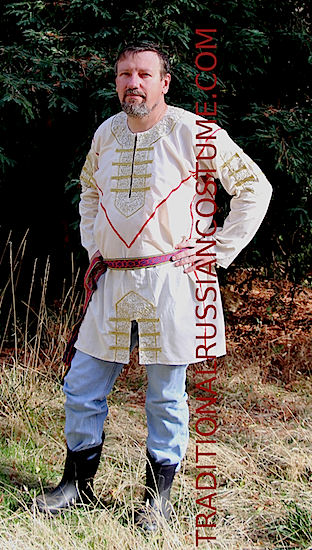
|
|||||||||||||||
|
This shirt copies authentic items presented at two prominent Russian museums: Moscow State Museum of History and Yaroslavl Historic Monument. In the seventeenth-century Russia all members of Household Division (not only officers, but even soldiers) were considered as nobility (many Russian noble families were started by "just" Household Division privates). Accordingly, Household Division warriors’ clothes (not uniform) followed noble people’s clothing code. The authentic shirt is made of kise'a (thin and fine cotton). We applied a fabric-made muslin here. Of course, we kept all cut and fashion features of the original:
"A cut for a horse" serves the same purpose as a similar centered cut at Russian and European armor of knights and riders. Look: a proper armor should be of a knee-length. Pretend you need to ride a horse, and there is no central cut. What should you do? Ride like a woman, in a sidesaddle? Or, roll your armor up to a waist level? The shirt is heavily decorated with golden embroidery (zolotoe shit’e, "golden stitch") and galun – golden trim of different width. Since the tenth century, golden embroidery was produced in monasteries’ workshops. Initially, nuns made "golden stitch" for church items and ceremonial clothes of clergy only. Later, it became a regular practice to accept orders from noble people - princes and boyars. In the fifteenth century, monasteries started selling their "golden stitch" production to European countries. And, since the seventeenth century, expensive headdresses decorated with zolotoe shit’e became a mandatory part of village women’s and, especially, adolescent girls’ outfit.
To be precise, this design is a formalized image of a Indo-European delivering Mother of the World / Tree of Life / Scythian serpent-legged goddess – avatars of the Great Mother of Paleolithic cave paintings. But, definitely, seventeenth-century nuns have never thought about such deep semantics of the pattern. They just followed a church needlepoint standard.
| ||||||||||||||||
Sources (in Russian).
| ||||||||||||||||

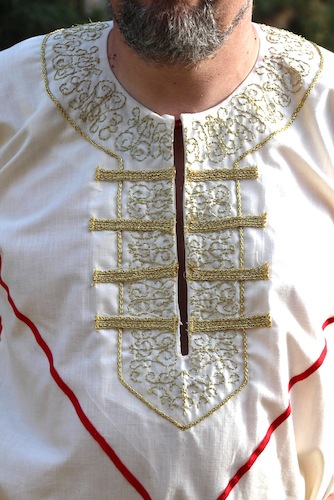
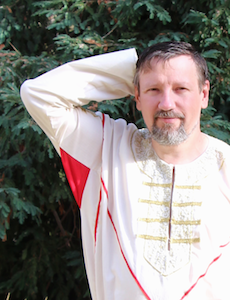
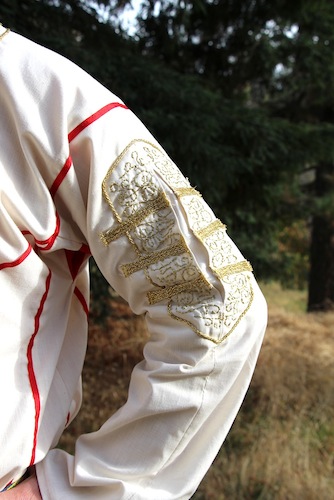
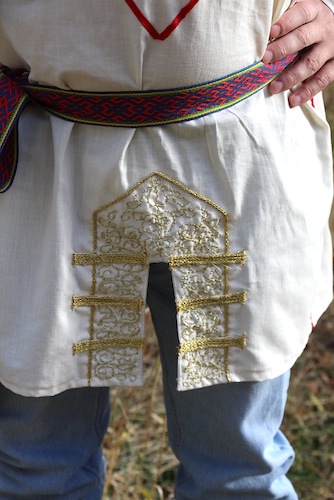
 The pattern used for this shirt is a pure decorative. In contrast to
The pattern used for this shirt is a pure decorative. In contrast to